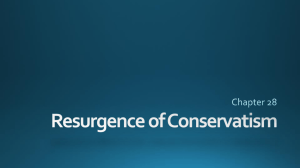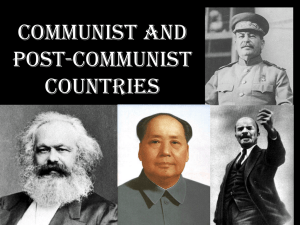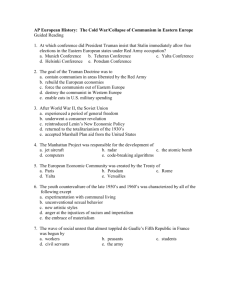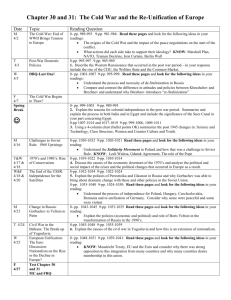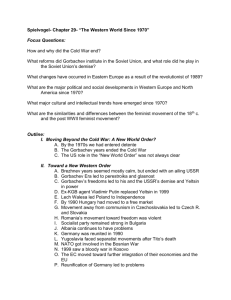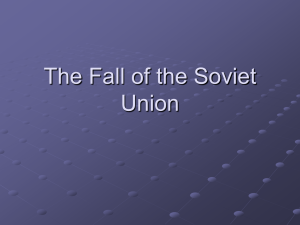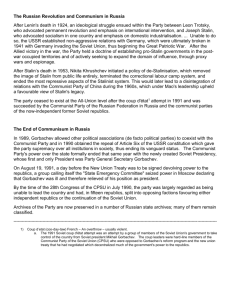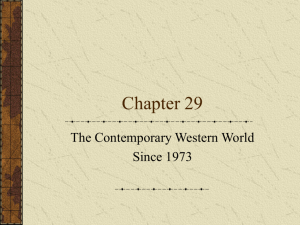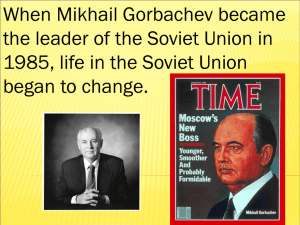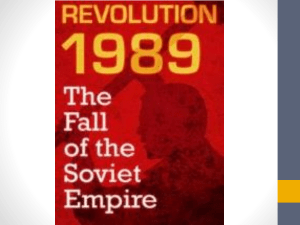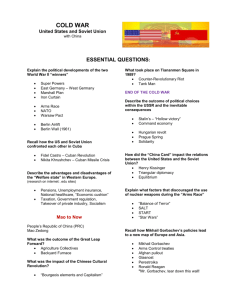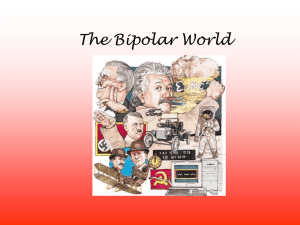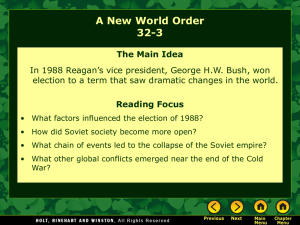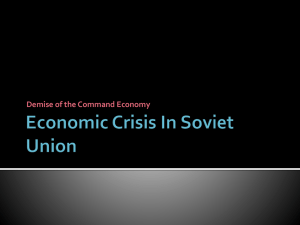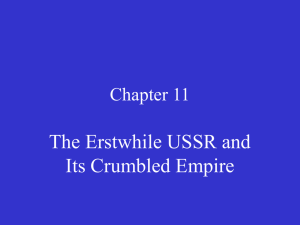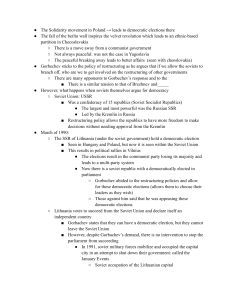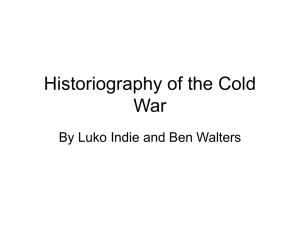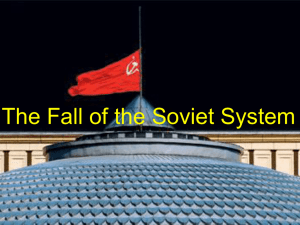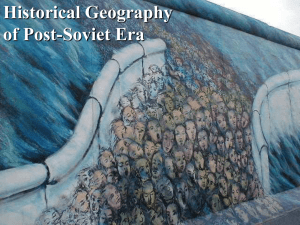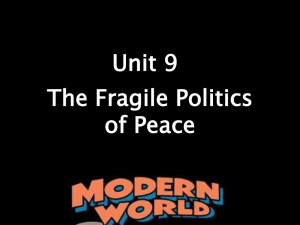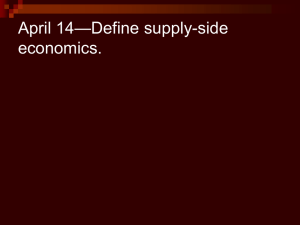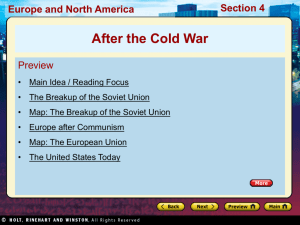Chapter 35 section 3: The Collapse of the Soviet Union
advertisement
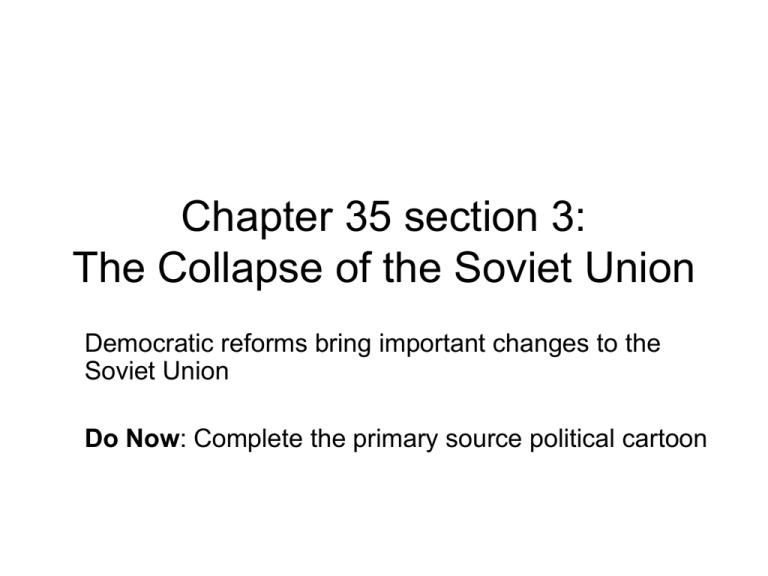
Chapter 35 section 3: The Collapse of the Soviet Union Democratic reforms bring important changes to the Soviet Union Do Now: Complete the primary source political cartoon Gorbachev moves toward democracy • Politburo- ruling committee of Communist Party; – rules USSR harshly • Leonid Brezhnev dies in 1982; – two successors rule briefly • Mikhail Gorbachev- becomes Soviet leader in 1984 • Young, energetic, skilled and wants to pursue new policies 1985: Gorbachev & the Era of Reform • Glasnosts- openness -increased political freedoms Economic • Perestroikarestructuring -economy more efficient • Democratization- Communism Politicial -gradual change to political system Social • Foreign Policy-December 1987-(INF)Intermediate Range Nuclear Forces Treaty- arms race control New Policies • To achieve economic reforms, he needs to open dialogue in society – Promotes new policy of glasnost– openness; dissent allowed • People complained about a lack of goods; – – – – Gorbachev blames old system he introduces perestroikapolicy of economic restructuring Hope to make economy more efficient and productive New Policies Continued Democratization opens the political system • In 1987, he unveils plans to have more democracy • Voters, given a choice, elect many reformers to new legislature Foreign Policy • Gorbachev signs arms control agreements with US Soviet Union Faces Turmoil • Gorbachev wants to reform Soviet Union but reforms lead to collapse • Non-Russian ethnic groups rebel in different republics Lithuania defies Gorbachev • In 1990, Lithuania declares independence • Gorbachev fearing similar actions in other republics sends troops • Reformer Boris Yeltsin rallies people against Communist old guard • Old-time Communists oppose both Gorbachev and Yeltsin The Soviet Union Faces Turmoil August Coup • In August 1991, hard liners try to seize control of the government again • Thousands of protesters and Yeltsin rally against this move • Army refuses to attack protesters and coup collapses End of the Soviet Union • Government takes actions to punish Communist Party for coup • Many republics declare independence • Gorbachev cannot stop them • Republics form a federation, CISCommonwealth of Independent States CIS- Commonwealth of Independent States Russia under Boris Yeltsin • Yeltsin aims to reform the Russian economy • Tries “shock therapy”- quick transition to free market system • New policies bring economic chaos, hardship and political troubles Chechnya Rebels • In 1991, Chechnya declares independence from Russia • Yeltsin attempts to crush rebellion, causing unrest at home • As conflict continues in 1999, he resigns in favor of Vladimir Putin Russia under Vladimir Putin • Fighting drags on in Chechnya • In 2002, Chechen rebels seize theater in Moscow; many die • As of 2007, the rebels have been largely quieted • Economic problems continue leading to unstable politics • Social problems include homelessness and unemployment • Decline in average life expectancy Soviet Union/ Russian Leaders Gorbachev •Used glasnost & perestroika to change Soviet Union’s government & economy •Ended Cold War tensions •Helped to end communism throughout Eastern Europe Yeltsin •Struggled with transition from communism to democracy •Industry and farms were privatized •Food shortages increased •Unemployment rose Putin • lessened power of regional leaders •Exerted control of DUMA, Russian legislature •New relations with the West •2002 signed arms reduction •Led to economic growth
